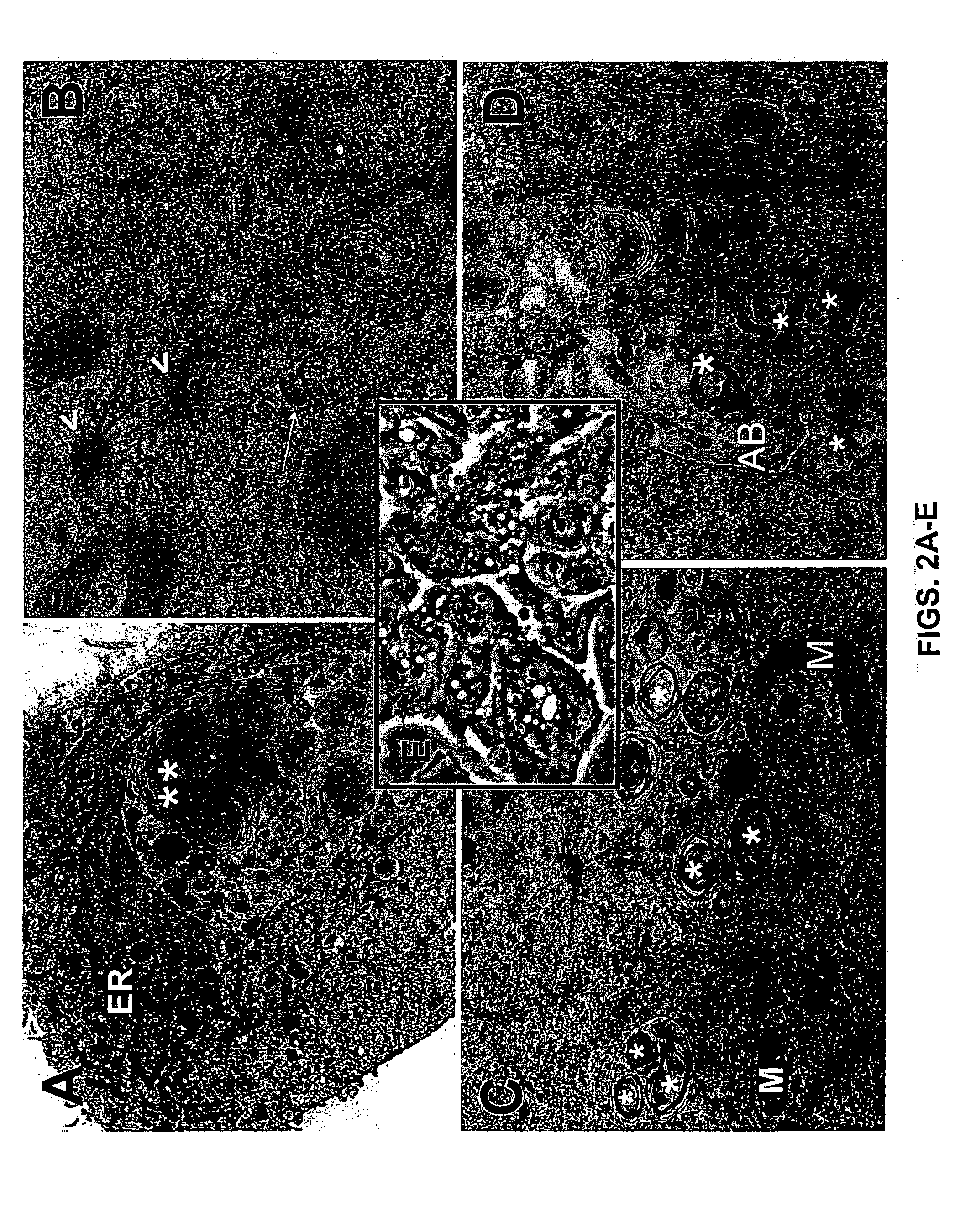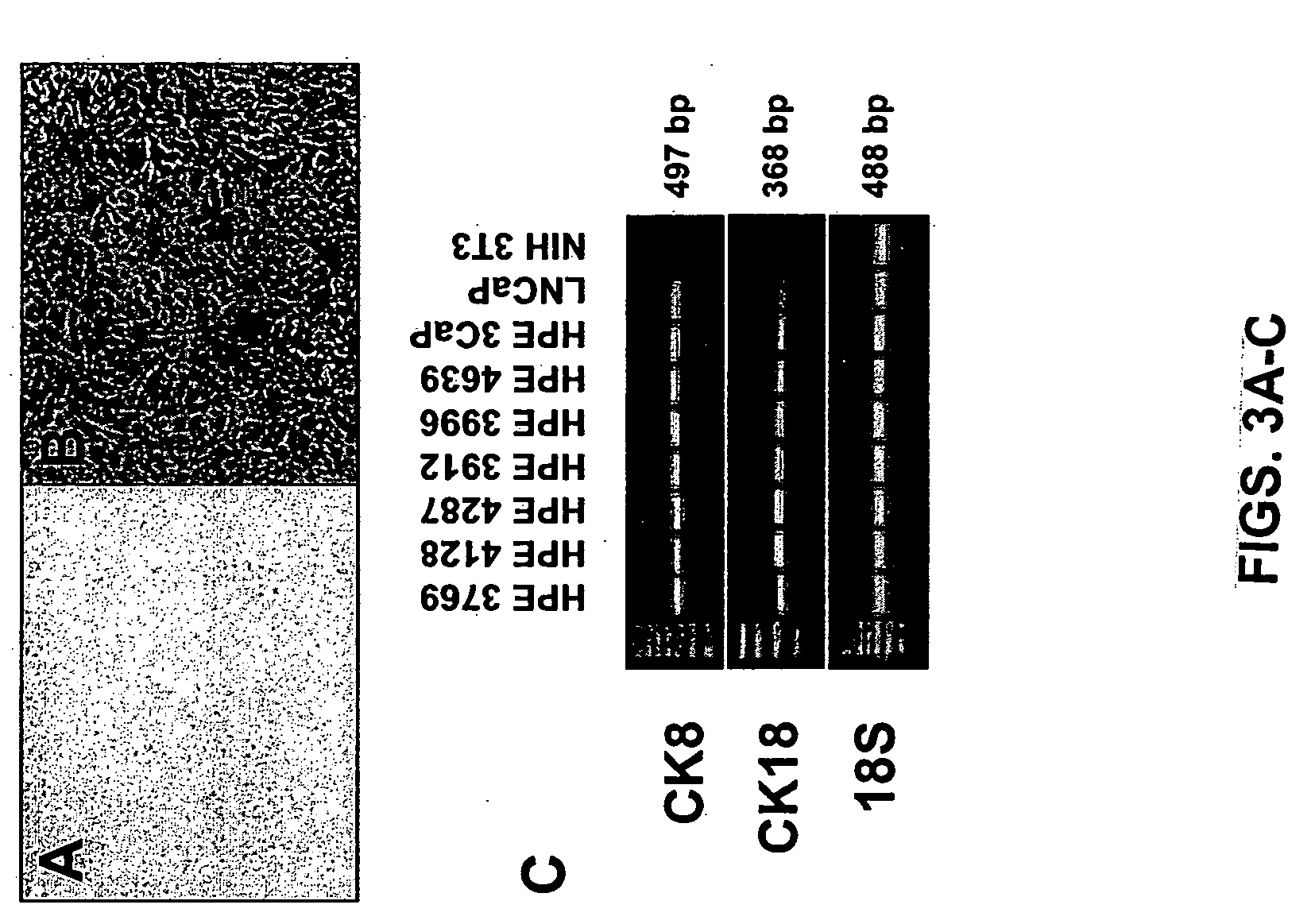Diagnostic and prognostic methods for prostate cancers
a prostate cancer and prognostic method technology, applied in the field of oncology, can solve the problems of not all patients are cured, their disease may recur, and it is not possible to identify the subset of patients whose tumors are presen
- Summary
- Abstract
- Description
- Claims
- Application Information
AI Technical Summary
Benefits of technology
Problems solved by technology
Method used
Image
Examples
example 1
The Antiandrogen Flutamide Enhances Transcription in Primary Human Prostate Epithelial Cells Through an Androgen-Independent Mechanism
[0292] Initially, prostate cancer depends on androgens for growth and survival and when androgens are removed, regression occurs. These observations were made by Huggins and Hodges over 60 years ago when they reported that castration caused prostate cancer regression (Huggins and Hodges, 1941). Androgen ablation therapy (ADT) is still the most commonly used therapy for androgen-dependent (AD) prostate cancer (Brewster and Simons, 1994; Taplin et al., 1995). More recently, maximum androgen blockade was initiated where antiandrogens were administered along with GnRH analogues to simultaneously block adrenal as well as testicular androgens (Labrie et al., 1993). Kelly and Scher (1993) and Kelly et al. (1997) observed that in 30% of patients who failed androgen ablation therapy, serum prostate specific antigen (PSA) levels declined after treatment was wi...
example 2
MALDI MS Imaging and Molecular Fingerprinting of Prostate Biopsy Material
[0333] Androgen ablation therapy was first demonstrated by Huggins and Hodges in 1941, when they reported that castration or treatment with systemic estrogens suppressed cancer related symptoms and abnormal acid phosphatase levels in patients with advanced metastatic disease (Huggins and Hodges, 1941). Thus, androgen ablation therapy was established as the primary treatment for advanced prostate cancer. The advent of LHRH analogues allowed for chemical castration which was preferred over orchiectomy and the addition of antiandrogens provided a method to block the production of adrenal androgens, thereby allowing maximum androgen blockade. Antiandrogens have the advantage that they specifically bind the AR ligand binding domain and block activation of the AR signaling pathway. Treatment with antiandrogen is limited to the period while the tumor is still hormone responsive. Despite extensive investigation, the e...
example 3
Assess the Effects of Over-Expressing Proteins Identified in Cells / Tissue which have Failed Androgen Ablation Therapy on Cell Proliferation, Hormonal Responsiveness and Invasion
[0360] The inventors contemplate determining whether select proteins promote HPE cell proliferation and / or metastasis using an invasion assay and the tissue recombination model provided by the Animal Technology Core. Factors which promote prostate cancer cell growth and / or metastasis could provide potential targets for designing selective therapy regimes based on prostate tumor characteristics.
[0361] Two-D difference gel electrophoresis has identified proteins which interact with AR or that influence cell proliferation. Androgens are essential for the development of the normal prostate and they both stimulate growth and inhibit apoptosis of prostate cancer cells. Furthermore, approximately 30% of patients respond to steroid hormone and antiandrogen withdrawal suggests that the AR is still central in the pro...
PUM
 Login to View More
Login to View More Abstract
Description
Claims
Application Information
 Login to View More
Login to View More - R&D
- Intellectual Property
- Life Sciences
- Materials
- Tech Scout
- Unparalleled Data Quality
- Higher Quality Content
- 60% Fewer Hallucinations
Browse by: Latest US Patents, China's latest patents, Technical Efficacy Thesaurus, Application Domain, Technology Topic, Popular Technical Reports.
© 2025 PatSnap. All rights reserved.Legal|Privacy policy|Modern Slavery Act Transparency Statement|Sitemap|About US| Contact US: help@patsnap.com



